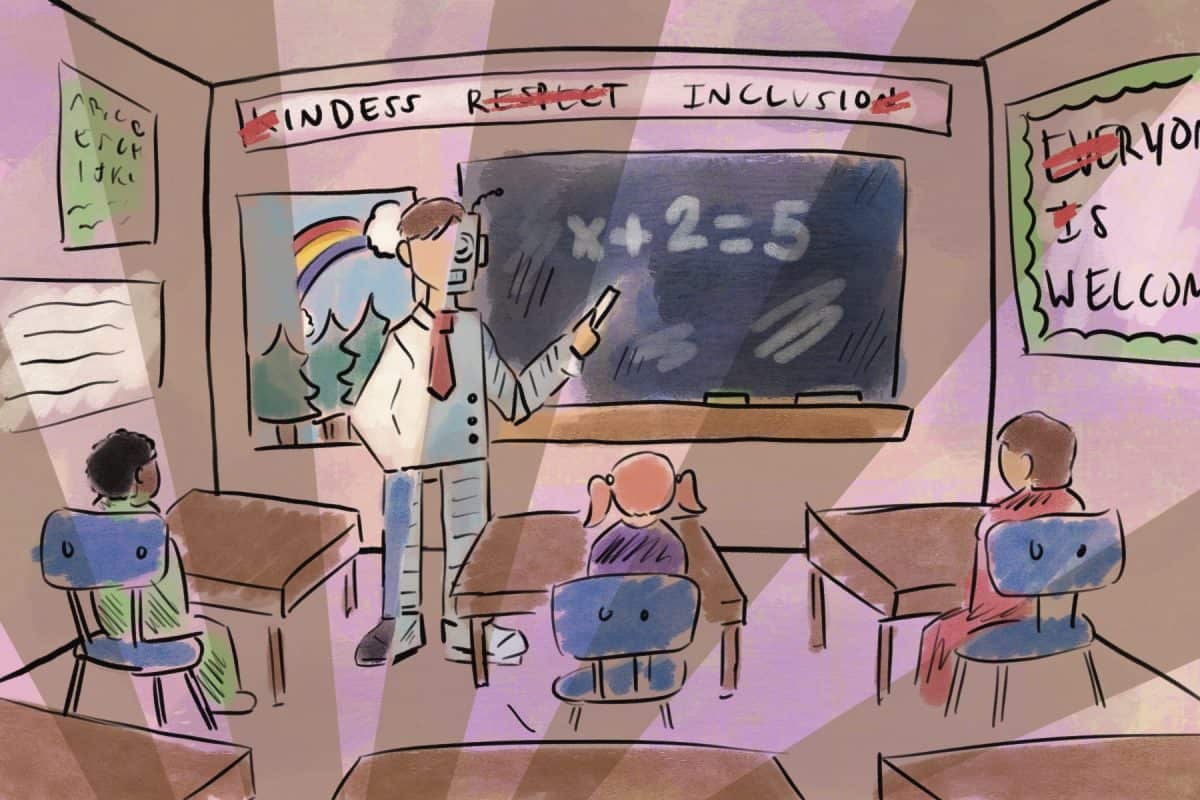As the teaching field has fallen under heightened political scrutiny over the past year, current education students have expressed concern about potential changes that could impact their future careers.
These future teachers are now navigating a shifting landscape of evolving policy, technological development and societal changes occurring within education and are facing the task of weighing their passion to teach with the reality of adapting to such changes.
President Donald Trump signed an executive order in March instructing Secretary of Education Linda McMahon to begin dismantling the Department of Education.
Since Trump’s inauguration, the ED has moved to drastically reduce its workforce, initiating the elimination of nearly 50% of the department’s workforce through voluntary separations, retirement or lay-offs.
This downsizing has raised concerns about the potential for decreased oversight and support for teachers due to cuts to federal programs.
“As I get ready to enter the teaching field, the cuts in funding towards Title Ⅰ schools concern me the most,” said Leah Black, a freshman majoring in chemistry and secondary education. “I do plan on returning to my home state of Illinois, and I live in a small, rural community, so I could see the effects of these cuts there.”
Title Ⅰ funding assists school districts for children from low-income families. The ED describes the aim of Title Ⅰ funding as being “to close educational achievement gaps by allocating federal funds for education programs and services.”
Low-income schools allocate federal grants for necessities such as school supplies, teacher salaries and technological tools, things that may be otherwise unaffordable without assistance.
“The ongoing cuts to and the potential closure of the ED will affect funding and other supports for poor and rural children, those students who tend to have the least access to technology,” said John Petrovic, a UA professor of social and cultural studies in education. “In fact, the department’s Office of Educational Technology has already been eliminated. This office provided school districts with support — not necessarily financial, but advisory support — on new technologies and best practices in their use.”
In addition to the field becoming increasingly politicized, technological development, and remote learning are now molding the expectations for incoming teachers.
Rapid technological advancements, such as AI-powered generative and hybrid learning tools, have caused technological proficiency to be an imperative skill for teachers to learn.
“I do think having to keep up with all the new technologies could be a challenge. It seems like as soon as you get used to one thing, it changes, and you have to adapt to something else,” Black said.
After the widespread implementation of digital resources during the COVID-19 pandemic, online learning tools have remained integrated to some degree in most schools. This near-uniform presence of digital and remote learning tools means that teachers must possess the necessary communication and instructional skills on digital platforms.
“Technology is something we can’t shy away from, especially in this period of artificial intelligence development. That is why we have professional development programs where education students can come and talk to us about these AI tools,” said Daniel Oyeniran, president of the College of Education Graduate Student Organization.
The integration of AI technologies into teaching models is shaping how teachers instruct and interact with students. However, while AI-powered learning tools can provide immersive and personalized teaching and learning resources, these resources present the risk of inauthentic or impersonal content.
“The brain is being assaulted by so much information that education has become nothing more than consumption,” said Doug McKnight, a professor of curriculum theory. “When a child begins using screens so early and begins to understand the world through a screen as opposed to a book or coming to someone and talking to them in person, this narrows one’s worldview and prevents the asking of questions.”
AI technology in the classroom also presents the issue of utilizing these educational tools while also prioritizing human interaction. Teachers are now tasked with balancing the use of new technologies with ensuring that students receive a well-rounded education, one including interpersonal and emotional development.
On average, children ages 8-12 spend four to six hours a day using screens. Children’s dependence on screen-based content has raised concerns over the potential detriment to cognitive, social and linguistic development.
“Kids are seemingly having a more difficult time developing relationships and handling adversity,” McKnight said. “This isolation created by personal technology keeps one from having those significant and serendipitous moments with peers.”
All of the rapid changes occurring within the teaching field have left education students seeking mentorship and recommendations for building resilience as they prepare to enter the field.
“What I need most right now is to just hear more good stories from educators. I feel like everyone’s first instinct is to scare people away from pursuing a career in education,” Black said. “All I end up hearing are stories of bad administration, always shifting curriculum, and misbehaving students. I would be more confident if I was shown more of the good side of teaching and was told more positive impact stories.”
However, mentor figures to these education students are struggling to adequately prepare them for their future careers, as many are unsure how to properly inform future teachers about the ongoing changes in the field while also encouraging resilience.
“We must have more determination in order to stay relevant in our field, but when resources are not available, it is easy to get discouraged,” Oyeniran said. “But when we are determined and we are resilient about the system, we make as much impact as we can in our space.”









